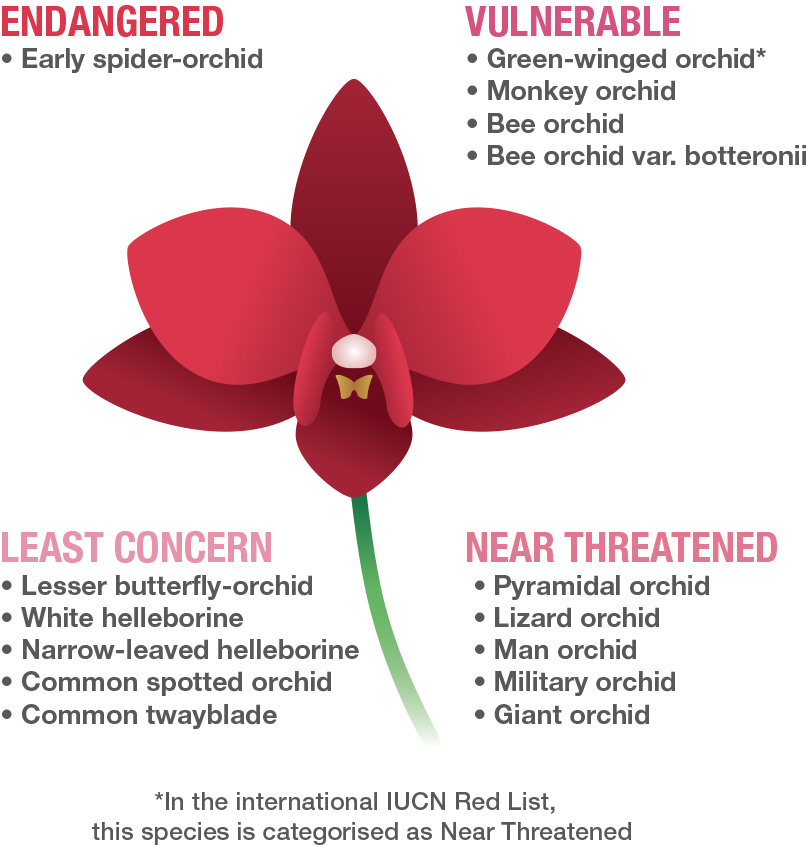 |
|
|
ORCHID SPECIES PRESENT ON CERN SITES. Categorised by the Swiss Red List on vascular plants (2016). |
Known for its research sites, CERN also includes 258 hectares of cultivated fields and meadows, 136 hectares of woodland and three wetlands. All this land teems with wildlife, including some rare species. CERN’s environmental commitment includes preservation of all land under its management. Since 2009, CERN has held the Swiss Nature & Economie Foundation’s label of quality in recognition of its efforts to protect biodiversity.
PRESERVING THE LANDSCAPE
CERN’s approach to landscape and biodiversity preservation is based on low-intensity maintenance. This means minimum watering, late mowing and reducing or eliminating fertilisers and chemicals. CERN’s lowland woodlands are among the last in the Pays de Gex. They are an important local resource and their trees and waterways are jointly managed by CERN and the French national forests office, the ONF. New developments, such as Science Gateway, are built with conservation in mind.
PROTECTING RARE ORCHIDS
Orchids are the pride of CERN’s dry grasslands with the largest variety to be found anywhere in the Geneva basin. The Organization is home to 15 species, 10 of which are on the Swiss national conservation list. In Switzerland, the early spider-orchid is endangered, while two varieties of bee orchid, the monkey orchid, and the green-winged orchid are vulnerable. The latter is also on the IUCN Red List as near threatened. Five species are categorised as near threatened in Switzerland: the pyramidal orchid, the lizard orchid, the man orchid, the military orchid and the giant orchid. Late mowing of CERN’s orchid sites, identified each year by a local expert, protects these plants by allowing them to live a complete life cycle.
In Focus
Patrick Geeraert is project manager of Science Gateway, CERN’s new education, outreach and visitor centre designed by architect Renzo Piano. Construction will begin in 2020.
— How green is Science Gateway?
PG: Science Gateway is very green. The building will be heated and cooled geothermally and will generate its own solar electricity. It will also be surrounded by trees – we’ll be planting at least 350 with the density of a forest to favour biodiversity.
— What specific measures are being taken to protect nature?
PG: We’re working closely with conservation organisations and I’m learning a lot! For example, to encourage small animals, the forest will be too dense in places for human access. Hedgerows will be low to allow animal access, and there will be animal passages under the roads. Lighting levels will be set so as not to disturb wildlife, and we’ll be using special bird-friendly glass. Science Gateway is a model for sustainable construction.
Learn more
Questions regarding this report may be addressed to Environment.report@cern.ch.
